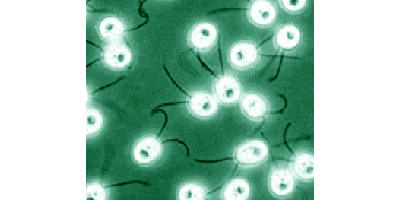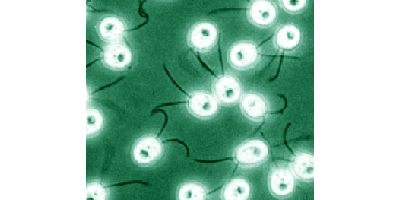Swimming into the Light
Algae may not be that sharp, but they know a bright spot when they find one. Certain species of microalgae exhibit behavior known as phototaxis, in which they swim preferentially in the direction of a light source. New experiments described in Physical Review Letters show that these microswimmers will concentrate toward the center of a flow pipe when a light is placed upstream. The results could help control algae used in biofuel production and pollution sensors.
Phototaxis is one of several environmental responses observed in small swimming organisms. Certain bacteria, such as E. coli, move towards higher concentrations of oxygen, and some algae and other microbes swim vertically by sensing gravity. Experiments in the 1980s, for example, found that gravity-sensitive algae placed in downward-flowing water will migrate to the central axis of the flow.
Xabel Garcia and colleagues from the University Joseph Fourier in Grenoble, France, have explored similar collective behavior in phototactic swimmers, specifically Chlamydomonas reinhardtii. These green algae are spheroidal, unicellular organisms with two flagella that perform a jerky breast stroke. When their light-sensitive eyespot is exposed to light, one flagellum beats faster than the other, causing the organism to swim towards the light source. The research team placed these algae in water flowing from right to left through a square pipe. When a light was placed on the right side (upstream), the swimmers orientated themselves toward the source, but—due to the nonuniform flow dragging them along–the net motion was directed towards the central axis of the pipe. In a biohydrogen facility, where algae expel hydrogen gas during photosynthesis, the observed self-focusing behavior could help prevent the organisms from clinging to walls, while also facilitating the gas separation process. – Michael Schirber





